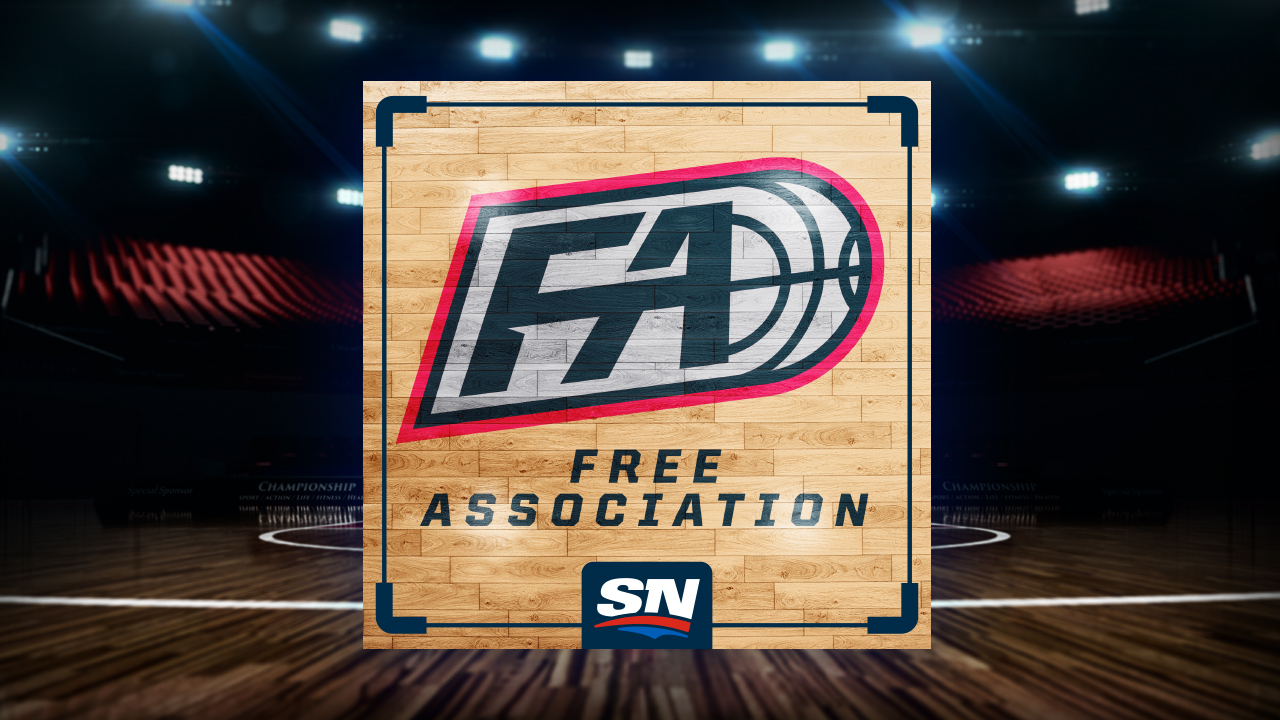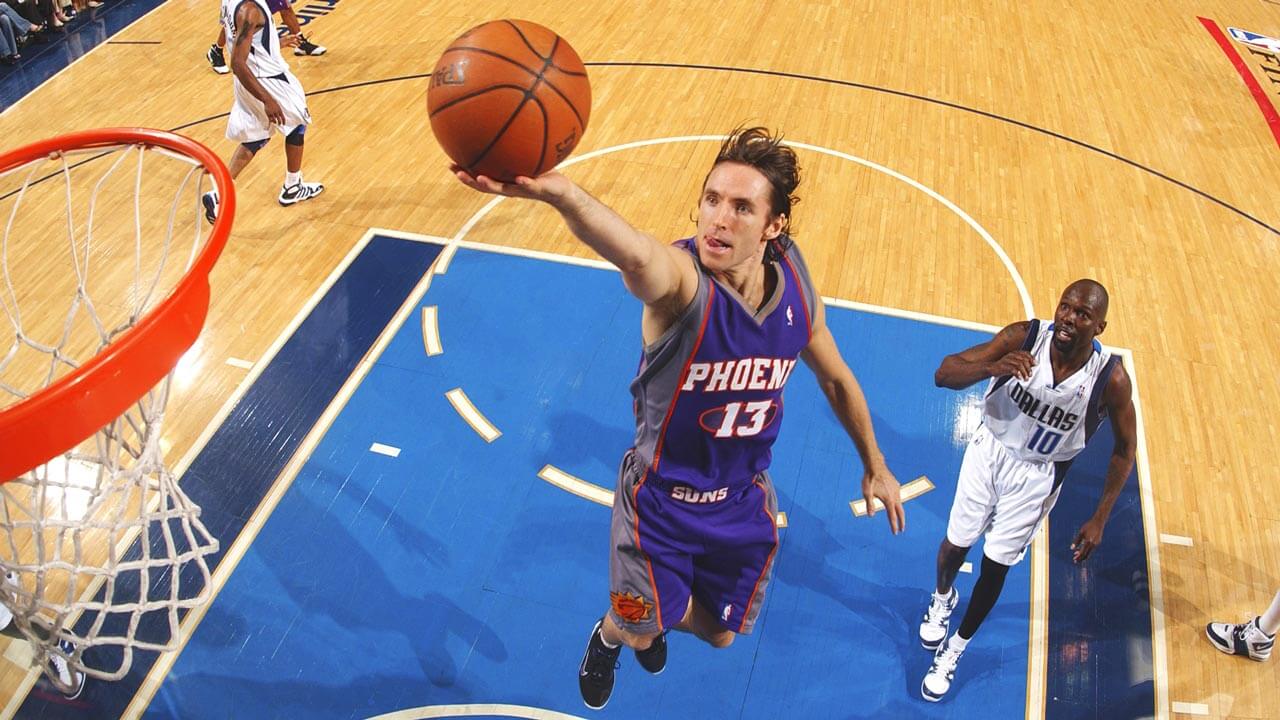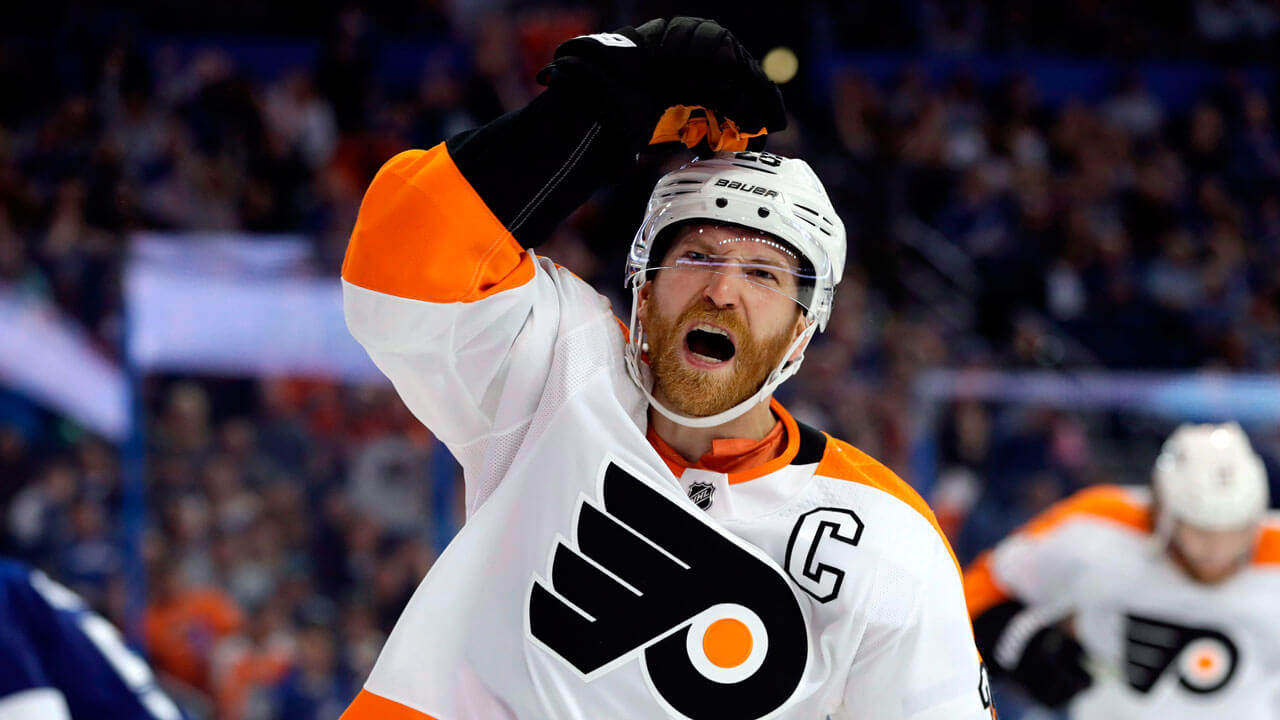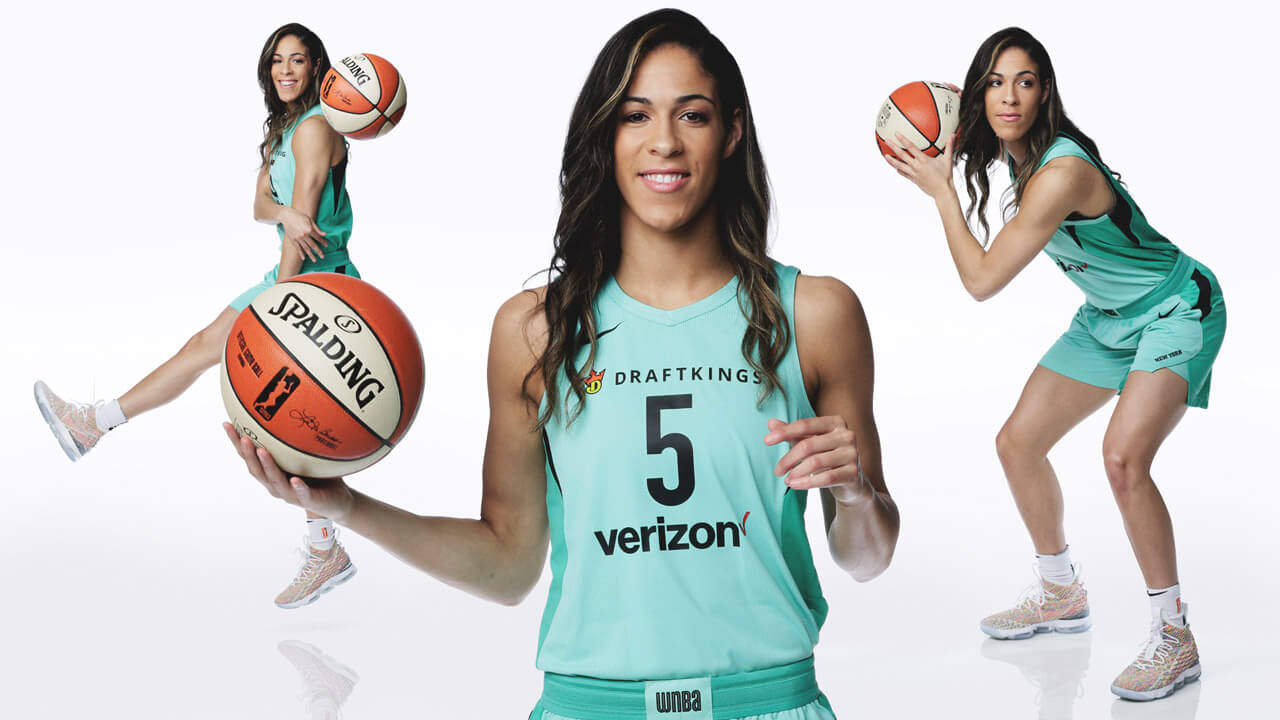Show me the claw.”
Kawhi Leonard has just ducked and wedged himself into a makeshift photo booth in the concourse of Scotiabank Arena. He’s surrounded by fluorescent string lights that dangle down from the ceiling and brush against the braids he’s sported since he was a teenager. Three cameras are aimed at him. The setup would be a touch claustrophic even if he weren’t six-foot-seven. He looks up and squints, visibly confused.
“C’mon, the claw,” the photographer repeats.
Leonard pauses. “You mean my hand?” he asks. It’s one of the few things those in attendance know for sure about him, that his hands are 52 per cent larger than the average human’s. He sighs and then dutifully lifts his mammoth mitt in front of his face, palm facing the lens. The flash bulbs explode like fireworks.
It’s a late-September day in Toronto, and the first time the 27-year-old has worn a Raptors uniform since he was traded to the team in the NBA’s blockbuster deal of the summer. In the months since that move, Leonard has been focused on rehabbing the injury that all but wiped out his 2017–18 season, while fans and the press alike have been clamouring to meet Toronto’s newest superstar. Earlier today, they got their first chance. A crowd of 60 or so, including several members of the Raptors’ brass, gathered in the arena’s lobby for his introductory press conference. That there was a desire in the room to decipher Leonard, who rarely does interviews and lives a life significantly more private than your typical NBA star, was clear from the first question: “What can you tell us about yourself?”
Over the seven seasons he spent in San Antonio, a run that included a championship and Finals MVP, and consecutive Defensive Player of the Year awards, Leonard had oft been described as “robotic” — as much for his expressionlessness nature during games as for the algorithmic basketball mind that inputs drills and play diagrams and executes them on the court with scary precision. And what he decided to share about himself at the press conference — delivered deadpan and quickly distilled down to “I’m a fun guy” — was interpreted along those lines. But, as teammates, friends and family have been saying throughout his career, the label doesn’t fit him.
Unlike most NBA players of his magnitude, Leonard is quiet and reserved in public — seemingly preferring to be judged by what he does on the court. But once he’s shielded from the spotlight, he’s an affable guy with a dry sense of humour to boot. A few moments after he escaped the awkward photo shoot, he sat down for a brief interview. “What would you be doing if you weren’t playing basketball?” he was asked. A smile crept onto his face just before he answered: “But I’m not playing basketball. I’m sitting in this chair.”
People have been trying to solve Kawhi Leonard for so long the back of his jersey may as well have a question mark in place of a number. But in truth, there’s no real mystery to the most talented player to ever wear a Raptors jersey. His motivations are simple; even his game is simple. Leonard is hyper-focused on getting better at basketball. Everything else is just noise.
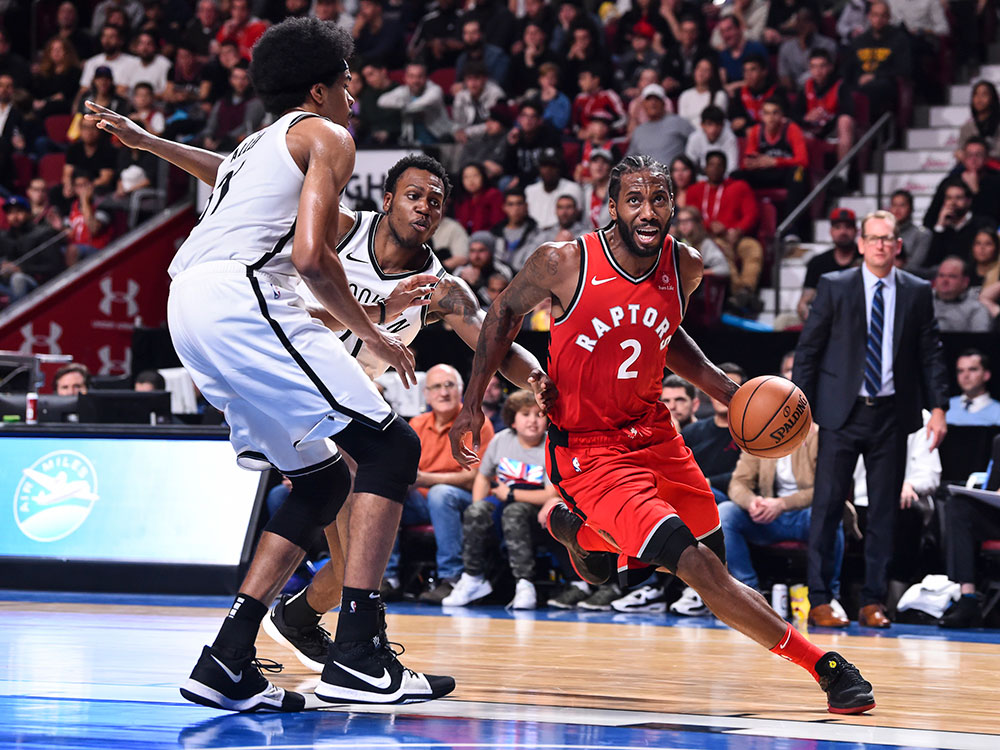
Nick Nurse was back where it all began. A little over a month after the 51-year-old was promoted to head coach of the Toronto Raptors, a local speaking engagement had led to a rare bit of off-season downtime in his hometown of Carroll, Iowa. The previous day he’d wrapped up his duties coaching the Raptors at Summer League in Las Vegas. On the morning of July 18, while visiting his mother, he woke up in his childhood bedroom, checked his phone and found out the Raptors had successfully pulled off the biggest deal in franchise history. Even though he’d heard the rumours Leonard might be coming to Toronto, Nurse was caught off guard. “I was surprised,” he says, still sounding as though it hasn’t quite sunk in yet that a creative basketball thinker like himself has been gifted a player who can literally do it all.
Had life been a movie, you can easily imagine a scene in which Nurse puts down his phone and immediately runs to his mom’s basement. Cut to 4:00 a.m., and hand-drawn diagrams and sticky notes cover the basement walls while a heavily caffeinated Nurse links plays with string like he’s trying to solve a conspiracy theory. “Pretty close,” Nurse says. “Except it was upstairs.”
Like everybody in the NBA, Nurse was familiar with Leonard’s game long before he became a Raptor. The coach had always been impressed by the efficiency of Leonard’s offensive gifts, and when asked to scout him as an opponent and uncover weaknesses in his game, Nurse found that there weren’t any good answers. “I can’t recall thinking, ‘Oh, he can’t go right,’ or ‘Force him left,’ or ‘Force him inside the three-point line because he can’t drive,’” Nurse says. “He was pretty unique in that sense.”
The conclusion was always the same: “He’s hard to guard and will probably score in a variety of ways.”
And then there’s the trait that truly separates Leonard from the pack: his defence. He has an innate ability to anticipate his opponents’ moves. His one-on-one coverage is smothering. He protects the paint and pins shots against the backboard. And he disrupts passing lanes the way a tornado disrupts a poker game. There’s a reason NBA general managers, in an annual pre-season survey, named Leonard the league’s best defensive player in each of the past four seasons.
Although his first public appearance wouldn’t come until the press conference nearly eight weeks later, Leonard made a brief stop in Toronto two days after the trade. A closed-door meeting was set up with Nurse, the first step toward establishing Leonard’s future with the Raptors. The two gathered in the coach’s office at the Raptors practice facility. Nurse planned to let Leonard speak first and, because of his reputation, expected to get a short sentence or two, at best. He had prepared a brief monologue about his own background in case he had to fill the silence. He never got to deliver it. “He started firing away,” Nurse recalls, “then next thing you know I’m up at the board drawing things, and he’s up at the board with me.”
The two freely exchanged ideas, passing the marker back-and-forth. Nurse says he would draw up a play and Leonard would then offer tweaks, suggesting, for example, where he’d be more effective receiving the ball. “He’s really a basketball guy — smart, knowledgeable. Teaching and learning are a two-way street, and I was certainly enjoying hearing his take on things,” says Nurse. “It was fun, man. A couple basketball guys in there talking about basketball.”
A knock on the door interrupted their impromptu brainstorming session. They’d gone long, and Leonard was scheduled to meet other members of the organization. The two said hurried goodbyes and promised they’d continue their conversation at training camp.
In the weeks that followed, Nurse made a point of not reaching out for background info on Leonard. “I want to make it a blank slate,” he says. “I want to get to know him and not have any preconceived notions of who he is, because I already had one — that he wasn’t going to be talkative — and that turned out to be untrue.”
A different preconceived notion had been confirmed, though: Leonard was a hard worker and eager to learn. And if Nurse had dug into his new star’s history, he’d have seen that much was clear from the beginning.
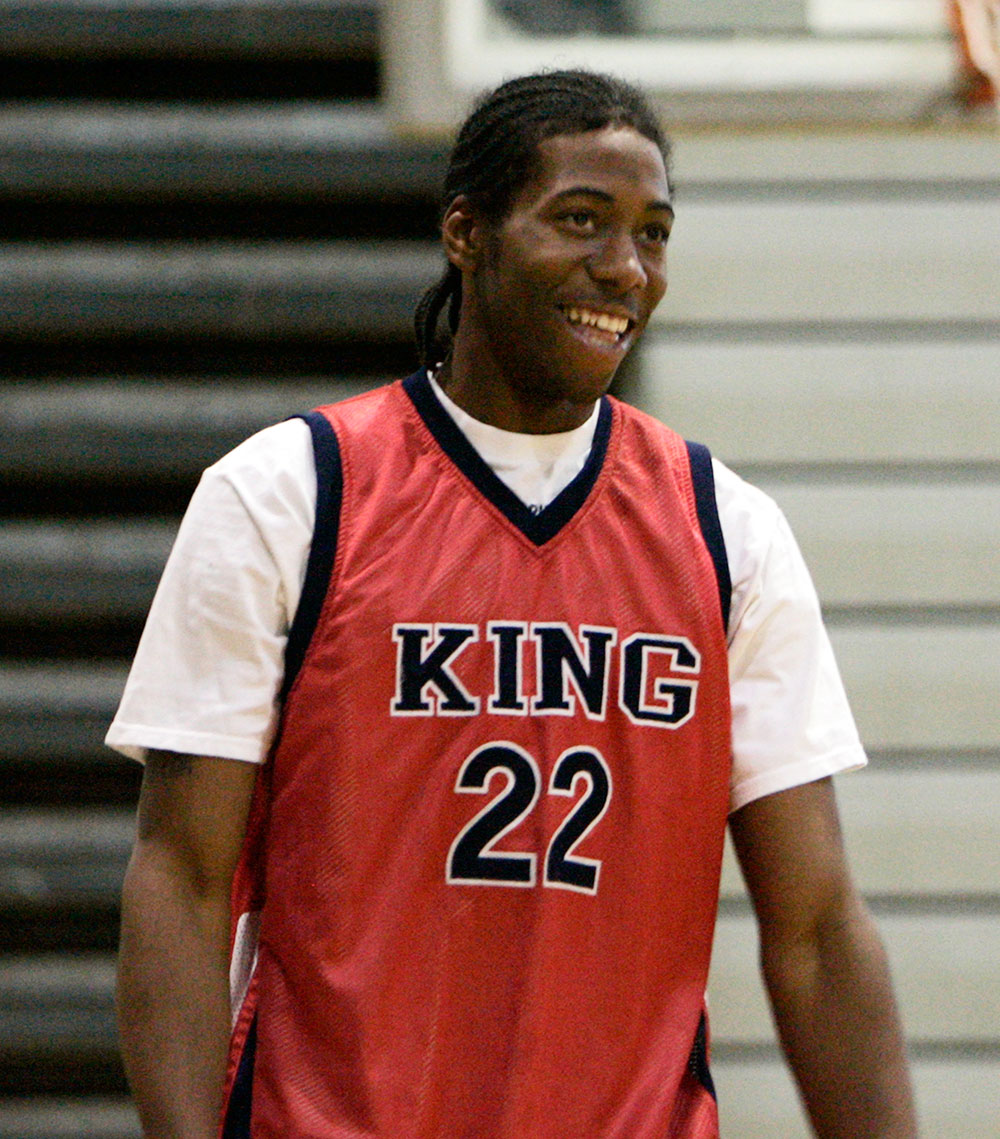
Moreno Valley, Calif., is a city about 100 kilometres east of Los Angeles, quiet like the basketball star it produced. Leonard grew up there with his older sister, Meisha, and his mother, Kim Robertson. His father, Mark Leonard, lived in Compton where he ran a car wash.
Leonard was introduced to the game early, and soon the court was the place where he was happiest and most engaged. He played AAU ball, but was never a fixture on the summer hoops circuit. So in 2007, when he transferred to Martin Luther King High School in nearby Riverside ahead of his junior year, there was little fanfare. “Kawhi rolled in with the attitude of ‘I want to play some basketball,’” recalls Jeffery Dietz, then an assistant at the school and now its head coach. “Just a humble, quiet kid — a quiet assassin.”
He may not have said much, but Leonard’s talent was obvious from the start. “He was a man in a teenage body. The way he moved, what other kids had to work harder at looked effortless to him,” says Dietz, who was also struck by Leonard’s blue-collar approach to the game, unusual — and maybe even a little odd — in a teenager.
On the latest episode of Sportsnet's Toronto Raptors podcast, JD Bunkis and Donnovan Bennett debate Kawhi Leonard's readiness to lead his new team.
As Leonard began dominating on the court, off it he found a pair of close friends in teammates Jeremy Castleberry and Taylor Cunningham. They still make up his inner circle today — Castleberry was hired by the Spurs during Leonard’s time in Texas and joined the Raptors coaching staff this summer. “Half the battle with keeping kids in the right direction is their peer group, and Kawhi had a good peer group,” says Dietz. “Kawhi figured out early on what he wanted and what worked for him — and not much has changed since.”
He had his tight-knit family unit, a familiar and small circle of friends, and a passion for something at which he was excelling. But soon, basketball would take on an even greater meaning.
You can bet that Jan. 19, 2008, was circled on Leonard’s calendar. His team was set to face rival Compton Dominguez in a much-hyped game at UCLA’s 13,000-seat Pauley Pavilion. There was another reason to be excited, too: His father, Mark, was going to be in attendance. Kawhi was in a car with his mom and uncle, Dennis Robertson, the night before the game when he received a call and heard the news that Mark had been shot multiple times and killed while closing up his car wash — a crime that remains unsolved. They got home and Leonard went straight to his room. “When we went to check on him,” Robertson told Sports Illustrated in 2014, “he just said, ‘I’m good.’”
Despite the tragedy, Leonard decided to play in the Compton Dominguez game. Dietz says he and then-head coach Tim Sweeney monitored him for signs of a potential breakdown, but it was difficult to tell how he was feeling during the game. After the buzzer sounded, though, Leonard collapsed into his mom’s arms on his way off the court. He hugged his teammates and cried. But, sure enough, he was back at practice the next day. “Basketball helps me take my mind off things, picking me up every day when I’m feeling down,” Leonard told the L.A. Times ahead of a playoff game six weeks later. “I try to play as hard as I can each night. That’s what my father wanted me to do.”
Leonard took his play to another level during his senior season. In the state-championship game versus undefeated local powerhouse Mater Dei, he scored 11 points, grabbed 20 rebounds, blocked six shots and registered three steals in a win. As his stock rose, he attracted real outside attention for the first time. According to Dietz, Nike reps began dropping off sneakers before games — just one pair, in Leonard’s size. The budding star was nonplussed. “Cool,” he’d say, before making a beeline to the court.
Colleges arrived as well, with traditional powerhouses like UCLA and Connecticut courting him by season’s end. Leonard ultimately chose to attend San Diego State, the first team that had shown interest in him, and led the Aztecs past the first round of the NCAA tournament for the first time in school history. At the 2011 NBA Draft, the Spurs traded George Hill to the Indiana Pacers for the 15th pick in order to select Leonard. According to the 2014 SI profile, when Leonard met Gregg Popovich for the first time, the coach warned him about the potential backlash that could be directed at him over the loss of a fan-favourite in Hill. Leonard made it clear he didn’t listen to outside noise and couldn’t care less if he was criticized.
Other than that conversation, the Spurs coaching staff didn’t have much of a read on Leonard in the early going. “Kawhi was quiet and reserved, and all of a sudden he’s getting to know a bunch of strangers,” says Memphis Grizzlies assistant coach Chad Forcier, who was with the Spurs at the time. “For many human beings that’s an awkward position to be in.”
Along with famed shooting coach Chip Engelland, Forcier was assigned to work closely with Leonard. Asking him to meld the mechanics of Kobe Bryant and Richard Jefferson, the coaches outlined how they planned to tweak his shooting technique, but the NBA lockout put an end to their work after just a few sessions. That was in June, and it wasn’t until late December, when the NBA resumed, that the Spurs got to check back with their top rookie. They were surprised and encouraged to see that Leonard had almost completely reworked his shot, based on the few days of instruction from Engelland and Forcier. “He was a sponge who was very eager to learn, very willing to listen,” says Forcier. “But as we got to know Kawhi, it was obvious that he had a deep burn as well. No matter how quiet or reserved he may be, the competitive streak inside of him is hot and his desire to grow and become a great player was evident.”
Leonard quickly won over Popovich, who started the rookie in each playoff game that 2011–12 season and began putting the ball in his hands more on offence. His game just kept expanding, Forcier recalls. He would soak up new skills — like scoring from the low-post — sometimes even picking up fresh techniques at shootaround and deploying them in a game later that day. With his offensive attack sharpening and his defensive instincts second-to-none, Leonard was becoming arguably the league’s premier two-way player.
That success brought more confidence, which manifested both on and off the court. Leonard began to offer glimpses of personality that had previously been reserved for his teammates, friends and family. He co-starred with a few fellow Spurs in a string of commercials for H-E-B, a Texas grocery chain. In one he nonchalantly palms a giant ball of laundry while his teammates stand in awe and compare his hand to a bear’s paw. In another, dressed in a smoking jacket he shatters his reputation for monosyllables by uttering a single word: “indubitably.”
As his celebrity grew, more was asked of Leonard away from the court. He was flooded with interview requests, most of which he turned down. Potential endorsement deals, H-E-B aside, mostly got the same treatment. When he was asked in the summer of 2014 whether he felt companies had offered enough money for his services, Leonard told the San Antonio Express-News, “Not as much as I want for me to not shoot the basketball that day.”
Joel Anthony was a 10-year veteran entering his final NBA season when he joined the Spurs in 2016. He recalls arriving for an informal off-season scrimmage in San Antonio. Anthony had played with the likes of LeBron James, Dwyane Wade and Ray Allen, and was on the Miami team that beat the Spurs in 2013. He knew what Leonard was capable of, but was still taken aback by the fire he brought to the meaningless game. “He was all over people,” Anthony says. “Guys were scared to bring the ball past half-court. He was playing at such an intense level; everything was under control but also extremely aggressive. I was so impressed.”
Forcier has experienced the same surprise: “Because he was so quiet and, by nature, very reserved, you didn’t have any indication of how confident or comfortable he could become under the most intensely scrutinized pressure moments. Now we know. He’s one who, when the lights get brightest and the stakes get the highest, has proven that he can rise up and perform.”

Danny Green leans against a railing and lets out a deep sigh as the elevator takes him down to the Scotiabank Arena basement. Green, who was included in the deal from San Antonio that sent DeMar DeRozan, Jakob Poeltl and a protected first-rounder to Texas, parked himself two seats from Leonard at the introductory press conference this morning and spent a good chunk of the day answering questions about his long-time teammate. “I swear, I’m going to be asked about Kawhi for the entire season,“ he says, “but I’m ready for that.”
Having played alongside the all-star since Leonard’s rookie year, Green knows that, like Castleberry, he’ll be a valuable asset in helping to ease Leonard’s transition. An All-NBA defender and 2014 NBA champion in his own right, Green says he made a conscious effort to field several questions on behalf of Leonard at the presser.
Two major concerns raised about Leonard’s move to Toronto are whether his injured quadriceps is fully healed and how he’ll adapt to a new role on a new team. So far neither appears to be an issue. Apart from some natural rust after having not played five-on-five since January, he’s looked healthy through pre-season play. And Green says he’s rarely seen Leonard as actively engaged with teammates as he has been thus far in Toronto. “He’s definitely more vocal than he’s ever been, on and off the court,” Green said before the final week of pre-season play. “In the huddles he’s chiming in, saying what he feels, saying his opinion. It looks like he feels comfortable. It looks like he feels at home.”
That shouldn’t necessarily be all that surprising. The Raptors’ depth means Leonard won’t have to score 30 points each night. He’s also joining an established winning culture. In return, he brings Toronto championship experience and the truly elite centrepiece the franchise has never had.
After nearly a year away from the game — during which his name was the subject of constant rumours and his personality was under a microscope — Leonard seems at peace with his basketball situation. And now, finally, the ideas he and Nurse tossed around in their first summer meeting can move from the whiteboard to the court.
Design by Drew Lesiuczok
Edited by Evan Rosser and Craig Battle

